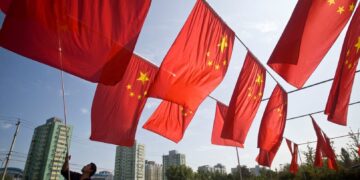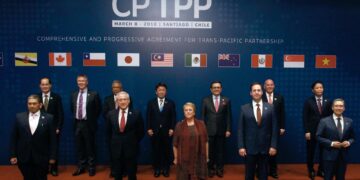The PRC government’s scorecard dipped in the last year, but regulators can take measures to improve rule-making transparency.
by Shelly Zhao
The PRC government has taken positive steps in recent years to increase regulatory transparency, but China’s lawmakers still have a mixed record when it comes to implementing transparency commitments. According to an analysis by the US-China Business Council (USCBC), the National People’s Congress (NPC) released one-third of laws passed during a recent 12-month period, while the State Council and its ministries posted for public comment 62 percent of rules and regulations during the same period.
For US companies, transparency in government remains an important issue. In USCBC’s 2011 member company survey, transparency ranked number eight in members’ top 10 issues that affect their operations in China, and transparency has consistently ranked as one of the top concerns for US businesses in China. Because foreign and domestic businesses often modify their strategies based on regulatory changes, rule-making transparency helps businesses make informed and efficient decisions. Maintaining regulatory transparency means soliciting public feedback during the creation of new laws and regulations, promoting open government decision-making, and granting access to regulatory information.
In April, USCBC released its fourth annual report on transparency, which covered the PRC government’s transparency efforts from the period of mid-March 2011 to mid-March 2012. The report focused on areas in which the central government has pledged to improve transparency. Overall, USCBC found that PRC government agencies showed mixed results in meeting their transparency goals.
MEASURING TRANSPARENCY
To measure the government’s commitment to transparency, USCBC identified new laws and regulations the PRC government said would be posted for comment on the State Council Legislative Affairs Office (SCLAO) comment pages or ministry website pages. Specifically, USCBC monitored government efforts to:
- Comply with the NPC Standing Committee’s announcement in 2008 that it would solicit public comments on most draft laws and amendments.
- Adhere to the May 2011 Strategic and Economic Dialogue (S&ED) commitment to “publish for public comment all trade and economic-related administrative regulations and departmental rules” for at least 30 days on the SCLAO website.
If a document was issued but not posted for comment it was classified as not meeting China’s transparency commitments. In addition, documents posted for comment were evaluated as to whether they had been posted on either the main SCLAO comment page or the ministry page, and were evaluated on whether the comment period met the 30-day commitment.
Quick Glance
- Though some PRC agencies improved their transparency records, the government’s overall transparency record remains mixed.
- One-third of laws passed by the National People’s Congress from March 2011 to March 2012 were posted for comment.
- During the same period, the State Council and its ministries posted roughly 62 percent of rules and regulations for comment.
Defining transparency can be difficult. China’s May 2011 S&ED transparency commitments did not define which regulatory documents would fall under “trade and economic-related administrative regulations and departmental rules.”
USCBC uses a narrow and broad definition to evaluate transparency. The narrow definition includes documents explicitly labeled as State Council or departmental administrative regulations, such as “provisions” (gui ding), “regulations” (tiao li), and “measures” (ban fa). The broad definition includes regulations in the “narrow” interpretation as well as other administrative regulations that appear to function as State Council or departmental administrative regulations, such as “opinions” (yi jian), “notices” (tong zhi), and “guides” (zhi yin). USCBC tracks the activity of PRC agencies that are most relevant to US industry issues and concerns, but recognizes that such lists may not be all-inclusive due to the nature of China’s transparency challenges.
IMPLEMENTATION OF TRANSPARENCY COMMITMENTS
USCBC found that the PRC government had a mixed record of meeting its transparency commitments from March 2011 to March 2012.
NPC transparency commitments
The NPC’s compliance with its transparency commitments has been inconsistent. Compliance between March 2011 and March 2012 deteriorated significantly compared to previous periods. Out of a total of nine laws and amendments passed within the 12-month period, only three (33 percent) were posted to the NPC website for comment during the drafting or revision process. Notably, the other six laws that were not released for public comment were amendments to existing laws. During the previous three tracking periods—from 2008 to 2011—the NPC released most draft laws for a 30-day comment period at least once during their standard three rounds of NPC Standing Committee review. The previous tracking period—from 2010 to 2011— showed that the NPC released 11 out of 14 laws and amendments (78 percent) for a comment period of 30 days.
S&ED transparency commitments
Though PRC agencies have been inconsistent in the publication of trade and economic-related rules and regulations for comment on SCLAO’s information website, there has been some improvement since 2009.
Using the broad interpretation of administrative rules and regulations, 130 of 259 relevant documents (50 percent) issued between mid-March 2011 to mid-March 2012 were posted for public comment to SCLAO’s dedicated webpage. An additional 31 documents (12 percent) were posted on ministry sites, but not on a designated SCLAO site. Of the documents posted on either site, 87 out of 161 (54 percent) were posted for the full 30 days. This is an improvement from the figures profiled last year when 142 of 503 documents (28 percent) were posted to a designated SCLAO website.
Using the narrow interpretation of administrative rules and regulations, 120 of 164 relevant documents (73 percent) issued from mid-March 2011 to mid-March 2012 were posted for public comment on a designated SCLAO website, and an additional 16 of 164 documents (10 percent) were posted to ministry websites. Of these total documents posted, 77 of 164 (47 percent) were posted for the full 30-day period. These figures still fall short of the goal of posting all documents but show an improvement from previous periods. The figures from the 2010 to 2011 reporting period showed that 72 of 165 relevant documents (44 percent) were posted, with only 11 of those posted for a full 30 days. From 2008 to 2009, 44 of 135 documents (33 percent) were posted for comment.
The adjusted average comment period for all documents posted to either website during the 2011-12 period was roughly 25 days. This was an increase from USCBC’s previous report, which showed an average of 17 days.
The frequency of comment solicitation on draft rules and regulations varies greatly among ministries under the State Council. Three agencies with fairly consistent records of soliciting comments are the Ministry of Transport (MOT), Ministry of Agriculture (MOA), and State Administration of Work Safety (SAWS). These agencies posted most of their circulated or issued documents for comment on the SCLAO comment pages. MOT posted all of the documents it issued, MOA posted eight out of nine documents, and SAWS posted 16 out of 17 documents.
TRANSPARENCY TRACKING CHALLENGES
Ambiguity over key terms allows different interpretations of the commitments and multiple ways of measuring compliance, which makes tracking transparency commitments challenging. Furthermore, the 2011 S&ED commitment states that posting rules and regulations is “subject to limited exceptions,” but it does not provide clarification on what these exceptions are. While the PRC government may consider certain documents to be exceptions to this commitment, such exceptions do not justify such low rates of compliance.
PRC government website issues also pose challenges for tracking transparency. The website URLs to which some administrative items are initially posted expire after a short time, especially for those posted on agency websites, making it difficult to locate regulations later. This is particularly common with administrative items released by the Ministry of Finance. Such issues hinder the effectiveness of government efforts to improve transparency.
Because the government does not appear to maintain a central database of items that have been released for comment, one of the few ways to verify whether laws and regulations were published for comment is to check the SCLAO and departmental websites regularly. This makes it difficult for anyone—public and private sector alike—to track transparency in a comprehensive fashion.
RECENT DEVELOPMENTS IN PRC TRANSPARENCY
The PRC government continues to emphasize its commitment to increase transparency through various statements and regulations aside from the NPC and S&ED commitments.
State Council aims to improve government websites
The State Council in April 2011 issued a notice calling on all government agencies to improve website administration—meaning sharing non-confidential documents with the public, posting policies related to public interests on government websites, and improving website operation and technical support maintenance.
State Council statement to strengthen budget transparency efforts
The State Council in May 2011 stated that PRC government and Chinese Communist Party departments should provide more details in public financial information and budget expenditures, particularly spending on government receptions and entertainment, overseas trips, and vehicles. According to the comments, government and party departments should publicize their budgets prior to NPC approval.
State Council releases public comment requirement on laws and regulations
In April 2012, SCLAO released the Provisional Measures on Draft Laws and Regulations for Public Comment prior to the May 2012 S&ED. Article 6 of the measures stated that “administrative regulations should generally be posted for no less than 30 days on the SCLAO website, with the exception of emergency or special circumstances.” While these measures addressed the 2011 S&ED commitment, it did not mention trade- and economic-related regulations specifically. A separate article in the provisional measures exempted certain national security, exchange rate, and monetary policy-related regulations from the public comment requirement.
Other transparency reports
The Peking University Center for Public Participation Studies and Supports in September 2011 published a report that measured the transparency of 43 State Council departments. The report assigned failing grades to 35 out of the 43 departments, and said that the State Council needed to improve information disclosure and access.
The Chinese Academy of Social Sciences (CASS) ranked government ministries by their progress on transparency commitments in February 2012. The Ministry of Commerce, National Population and Family Planning Commission, Ministry of
Environmental Protection, SAWS, and MOT were ranked among the most transparent agencies. The CASS report ranked Beijing, Tianjin, Jiangsu, Fujian, and Shanghai as having the most transparent provincial or municipal governments.
RECOMMENDATIONS
While the PRC government has improved its record of complying with some transparency commitments, the government could do more to raise transparency and clarify exactly which documents warrant public notice. To increase public participation and promote China’s transparent regulatory processes, USCBC recommends that the State Council take further action to:
- Ensure that all administrative regulations and departmental rules are posted on the designated SCLAO information website comment page for the full 30-day comment period. An even longer comment period of 60 or 90 days would be preferable and result in better comments for the consideration of government regulators.
- Publish a clear definition of the documents covered under the State Council’s transparency commitments. Regulatory documents such as catalogues, notices, and opinions can significantly affect how a business is run.
- Explain in detail, and within the bounds of confidentiality, the economic methodology and rationale that underpin administrative reviews and decision-making by central government bodies, including antimonopoly merger reviews, countervailing duty and antidumping investigations and case rulings, and decisions based on national economic security considerations.
































